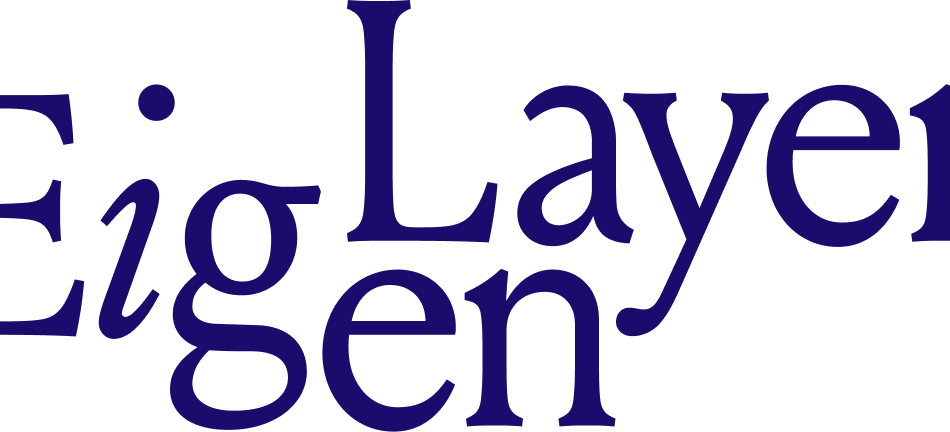Ethereum, the dominant smart contract platform, faces a constant dance between security and scalability. The transition to Proof-of-Stake (PoS) through the Beacon Chain brought enhanced security, but concerns around capital efficiency and fostering innovation remained. EigenLayer emerges as a game-changer, leveraging the revolutionary concept of “restaking” to unlock Ethereum’s true potential, holding immense relevance for financial professionals and blockchain experts alike.
Beyond Staking, Embracing Restaking
Traditionally, staked ETH remained locked in the PoS consensus layer, inaccessible for further utilization. This is where the transformative power of restaking takes center stage. Imagine simultaneously earning staking rewards on your Ethereum while seamlessly using those very assets to secure a multitude of protocols and applications. This paradigm shift unlocks a treasure trove of opportunities:
- Amplified Capital Efficiency: Users can extract additional value from their staked ETH, maximizing their financial potential. Traditional staking offered fixed returns, but restaking empowers them to tap into diverse opportunities, potentially amplifying their gains.
- Unleashing Scalability: By securing various applications, EigenLayer transcends the limitations of the Ethereum mainnet, paving the way for faster transactions and reduced fees. This scalability boost becomes crucial as Ethereum tackles its ever-growing user base and complex transaction volume.
- Fueling Innovation: Developers now have access to a robust, decentralized consensus layer, opening doors for a wave of groundbreaking DeFi, NFT, and blockchain applications. This fosters a vibrant ecosystem teeming with creativity and experimentation, pushing the boundaries of what’s possible.
Delving into the Technical Nuances
For financial professionals and blockchain experts, understanding the technical intricacies of EigenLayer is paramount. Here’s a deeper dive into its core features:
- Native and Liquid Staking: Both directly staked ETH and prominent liquid staking derivatives like Lido stETH seamlessly integrate with EigenLayer, catering to varied user preferences and investment strategies. This flexibility allows both traditional and DeFi-savvy individuals to participate.
- Granular Participation: Validators have the autonomy to choose which applications they secure, meticulously calibrating their risk-reward profile based on specific protocols and potential returns. This empowers them to make informed decisions aligned with their individual financial goals and risk tolerance.
- Modular Design: EigenLayer acts as an ingenious “middle layer” bridging the gap between Ethereum and various applications. This modular architecture ensures seamless integration and paves the way for future expansion, adapting to the ever-evolving blockchain landscape.

Impact on the Ethereum Ecosystem
EigenLayer’s influence extends beyond individual financial gain, shaping the wider Ethereum ecosystem:
- Decentralized Governance: EigenLayer empowers communities to collectively govern the protocol, fostering transparency and inclusivity. This aligns with the core principles of decentralization, ensuring community involvement in shaping the future of the protocol.
- Sustainable Security: By distributing consensus power across diverse applications, EigenLayer strengthens the overall security of the Ethereum ecosystem. This collective responsibility mitigates the risks associated with centralized control, promoting a more robust and resilient network.
- Open-Source Innovation: The open-source nature of EigenLayer fosters collaboration and rapid development. Developers worldwide can contribute to its evolution, accelerating innovation and ensuring the protocol remains at the forefront of blockchain technology.
Examples and Use Cases
Continuing our exploration of EigenLayer, let’s delve into concrete examples of how it can be utilized within the Ethereum ecosystem. This will further solidify the understanding of its potential impact for financial professionals and blockchain experts.
Unlocking Potential with Specific Use Cases:
- Decentralized Rollup Sequencers: Rollups, a popular scaling solution, often rely on centralized sequencers to process transactions off-chain before finalization on the mainnet. EigenLayer can decentralize these sequencers, leveraging staked ETH for security and validator participation. This enhances trust and censorship resistance in Layer 2 solutions.
- Secure Data Availability Layers: Decentralized applications (dApps) increasingly rely on data availability layers (DALs) to store off-chain data. EigenLayer can secure them, ensuring data integrity and accessibility. This is crucial for oracle networks, bridges, and other vital infrastructure components.
- Modular Sidechains: Ethereum’s mainnet can’t support all desired functionalities due to scalability limitations. EigenLayer paves the way for secure and customizable sidechains with distinct execution environments. This opens doors for specialized blockchains tailored to specific sectors like DeFi or NFTs.
- Hybrid Consensus Mechanisms: Some applications might benefit from combining PoS with other consensus mechanisms for specific needs. EigenLayer can act as a bridge, enabling seamless integration of diverse consensus models tailored to the application’s requirements.
- Enhanced Light Client Bridges: Light clients connect to the mainnet without downloading the entire blockchain. EigenLayer can secure light client bridges, allowing faster and more efficient token transfers by enabling optimistic transactions with later slashing for fraudulent activity.
Partnerships
- NEAR Foundation: This partnership aims to create the world’s first “fast finality layer” for Ethereum layer 2s, reducing transaction times from minutes or hours to 3-4 seconds and making them 4,000 times cheaper.
- Lagrange Labs: This partnership focuses on integrating Lagrange’s ZK Big Data stack with EigenLayer to bring fast finality state proofs to the Lagrange State Committee infrastructure. This will enhance the underlying state security of messaging or bridging protocols.
- Espresso Systems: This partnership aims to implement restaking on the Espresso Sequencer network, eventually bringing it to the mainnet. This will align the network with Ethereum and bootstrap its economic security through EigenLayer’s pooled security model.
- Lido: This partnership allows Lido stETH to be used for restaking on EigenLayer, expanding the pool of available capital and offering Lido users additional earning opportunities.
- Chainlink: This partnership explores integrating Chainlink oracles with EigenLayer to provide secure and reliable data for applications built on the protocol.
- The Graph: This partnership explores building a decentralized subgraph protocol on EigenLayer, enabling developers to build and monetize their subgraphs in a more secure and efficient way.
These are just a few of EigenLayer’s key partnerships. As the protocol continues to develop, we can expect to see more partnerships announced in the future.
Conclusion: A Glimpse into the Future
EigenLayer, with its groundbreaking restaking concept, stands poised to reshape the Ethereum landscape, fostering scalability, security, and innovation. Financial professionals and blockchain experts have the opportunity to harness its potential and contribute to shaping the future of decentralized finance. As the protocol matures and integrates with more applications, its impact will undoubtedly ripple beyond the confines of Ethereum, influencing the broader blockchain ecosystem and paving the way for a more secure, efficient, and innovative future.
Where to stay updated:
- EigenLayer website: https://www.eigenlayer.xyz/
- EigenLayer documentation: https://docs.eigenlayer.xyz/eigenlayer/overview
- EigenLayer Twitter: https://twitter.com/eigenlayer?lang=en
- EigenLayer Discord: https://forum.eigenlayer.xyz/t/discord-now-open-discord-gg-eigenlayer/3446
